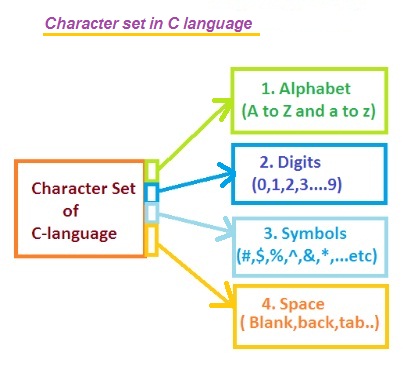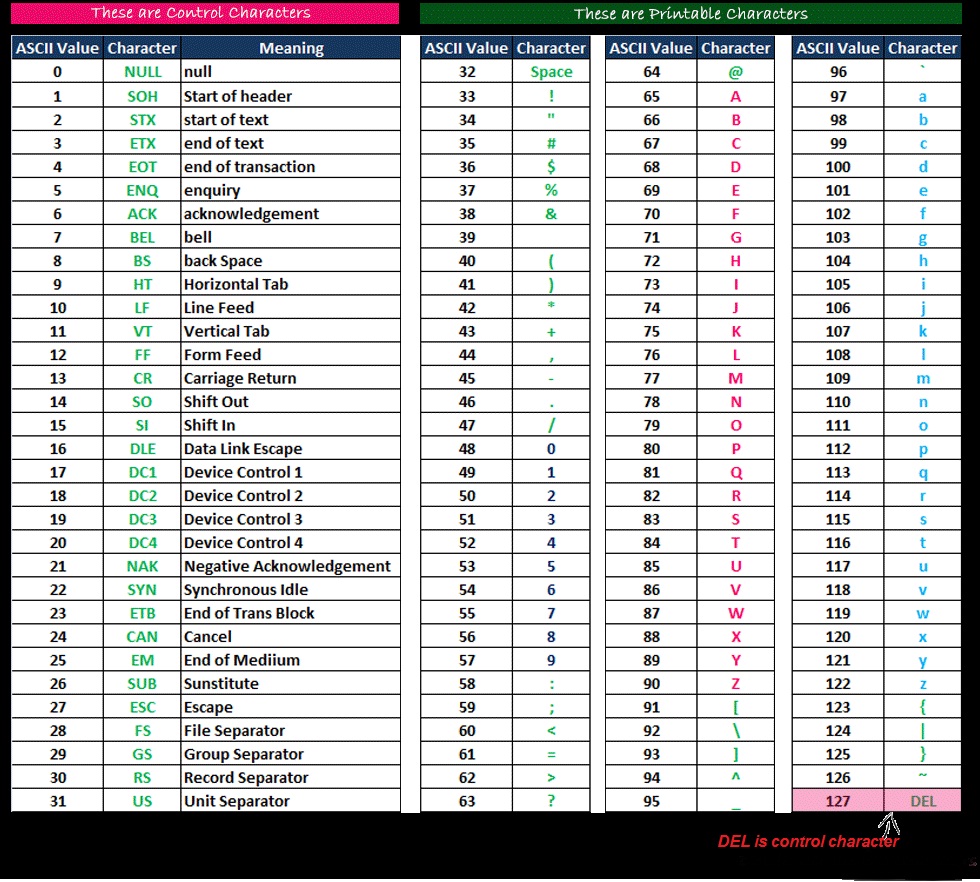
C Character Set
Character set in C language:
A character set is the key component behind displaying, manipulating and editing text, numbers and symbols on a computer. A character set is created through a process known as encoding i.e. each character is assigned with a unique code or value.
The character sets help in defining the valid characters that we can use in the source program or can interpret during the running of the program. For the source text, we have the source character set, while we have the execution character set that we use during the execution of any program.
All word and/or data processing applications are embedded with one or more character sets. The characters within a character set can be text, number or even symbols. Each character is represented by a number. ASCII characters set is one of the most popular character sets used by general computers to display text or numbers on computer screen. It represents uppercase and lower case English alphabets, number, mathematical operators and symbols from number 0–127.
Computer System understand there Character set via There Ascii code
ASCII: Stands for American Standard Code for Information Interchange, a standard data-encoding format for electronic communication between computers. ASCII assigns standard numeric values to letters, numerals, punctuation marks, and other characters used in computers.
C language also has a set of characters which include alphabets, digits, and special symbols. C language supports a total of 256 characters.
we will discuss ASCII in the next section...
Every C program contains statements. These statements are constructed using words and these words are constructed using characters from C character set. C language character set contains the following set of characters...
C language character set contains the following set of characters...
1. Alphabets
2. Digits
3. Special Symbols
4. Space
